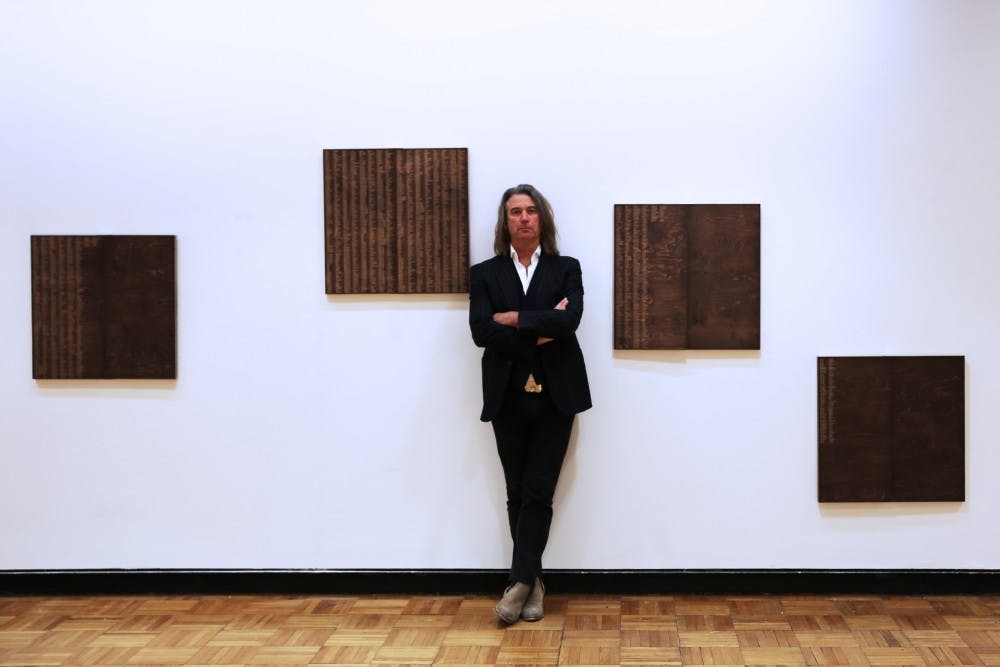Penn's School of Design will begin a project to build a World Park spanning five continents, creating walking and biking trails to help endangered animals migrate amid habitat loss and climate change.
While many national parks exist, parks that expand across continents and combine landscape architecture and environmental conservation are unprecedented in scope, according to PennDesign experts. The PennDesign project leaders are currently waiting for approval from countries that the two proposed trails would run through.
Once constructed, one of the paths will run north-south from Alaska to Patagonia and another will run east-west from Indonesia to Morocco. The first trail will cross through North and South America, with the second trail spanning through Asia, Africa, and Europe.
The two World Park trails are named “Pat-aska” and “Indo-roc," after the departure and destination locations of the paths.
The "Pat-aska" trail will be 25,000 km long, will pass through 15 countries, and would take two years to walk through. The "Indo-Roc" trail will be 35,000 km, will pass through 24 nations, and would take three years to finish walking through.
The project's exhibition opened with a public event on Jan. 25 in Meyerson Hall where Richard Weller, project leader and chair of Landscape Architecture at PennDesign, introduced the project. Weller said it aims to build structures into natural habitats to alleviate pressing environmental issues.
"If you're locked in a room where it's getting hotter and you can't move, you're in trouble," Weller said, adding that different species cannot migrate amid rampant habitat loss and climate change.

The project would create a continuous landmass that aims to increase biodiversity so that animals and plants can migrate and adapt to climate change easier. (Photo from Richard Weller)
RELATED:
Penn Design receives $1.25 million to research environmentalism through landscape architecture
Penn grad students advise Philadelphia in housing Hurricane Maria refugees
Once they begin mapping out the routes, the team attempted to pass through as many regions containing unique and endangered biodiversity as possible. They also tried to link future trails with existing trails to cut costs and to form continuous protected areas, Weller said.
The PennDesign team will also examine current models such as the Yellowstone to Yukon Conservation Initiative, a habitat stretching from Canada to the United States, to work out specific aspects of trail building.
The World Park aims not only to be touristic — as everyone can enjoy the trails — but also hopes to encourage global governments to start landscape restoration projects along the trails, according to a PennDesign press release.
Zuzanna Drozdz, a PennDesign graduate student pursuing a master's in landscape architecture, said she was largely motivated to come to Penn by the prospect of working on the World Park project.
Previous landscape architecture projects, such as PennDesign's Atlas for the End of the World, examined how future urban growth can endanger species, Drozdz said. But the new World Park project will provide the tangible mechanisms to help endangered species.

The route will also provide walking trails for tourists.
Candidate for a master's in landscape architecture Shannon Rafferty, who is working on the project, said she hopes the park can be a corridor for species that is unrestricted by territorial boundaries.
Penn is currently the only academic institution that will take part in the project, but the school plans to collaborate with The Nature Conservancy and the United Nations, Weller said.
Weller added that resistance from uncompensated landowners and suspicion from participating governments could be potential obstacles for the project.
After receiving consent from the affected countries, the PennDesign team plans to secure funding from governments and philanthropic sources. A board will manage the funding and oversee the park’s planning committee of engineers, landscape architects, anthropologists, and environmental scientists, according to PennDesign’s website.
"We've developed the idea, now we're going to push the boat out into the ocean and see what happens," Weller said.
The exhibit will be on display until Jan. 30 in the Upper Gallery of Meyerson Hall.









